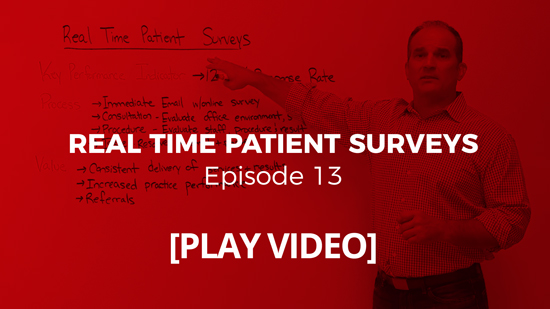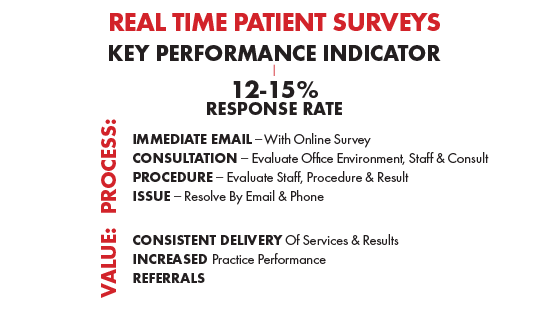Survey 1: After the Consultation
You should send a patient survey via email after the initial consultation and then again after they have spent money on treatment or surgery.In the initial survey, you should poll patients on the office environment, staff and the actual consult.
- Office Environment – Did you feel comfortable in the office? Did the facility meet your cleanliness standards? Did you feel safe?
- Staff – Were you greeted by a staff member upon your arrival? Was the office staff courteous? Was your wait time reasonable?
- Consultation – Were all your questions answered? Did you meet with the doctor/surgeon? Did you receive related handouts/information packets?
Survey 2: Post-Surgery/Treatment
Every time someone spends money on surgery or treatment you should send a survey via email prompting the patient to evaluate the staff, procedure and results.
- Staff – Did you feel comfortable with the staff you met during your visit? Did you feel the staff was competent/knowledgeable?
- Procedure – Did the procedure meet your expectations? Did you feel safe before, during and after the procedure? Is your post-surgery/treatment protocol clear?
- Results – Did your results meet your expectations? Would you recommend our practice to friends and family? Did the physician meet your needs?
Patient Survey Best Practices
When drafting your patient surveys and executing the process, keep these best practices in mind.
- Use marketing automation to create a stress-free survey process.
- Structure the surveys in an objective system (numbered one through 10 or A, B, C, etc.), so you can measure performance consistently.
- Prep the patient by verbally sharing they will receive a survey after their consultation and treatment.
- Tweak the survey questions based on the procedure/treatment administered.
- Respond to any negative comments by phone and email, letting the patient know you are interested in improving their experience.
- Expect a 12% to 15% percent response rate.
In today’s environment, sending and reviewing patient surveys is imperative to maintaining a successful business. Feedback from past patients allows for consistent delivery of services, improvement in communication among your team and efficiency of your practice. These factors ultimately result in more referrals and repeat business.


















